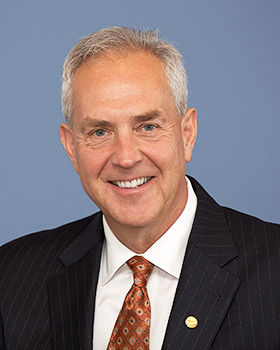
In a time of instant access to information through the Internet, including social media, it’s understandable that the general public shows little patience while waiting for answers after an aviation tragedy. This was never more of an issue than in the immediate aftermath of the disappearance of Malaysia Airlines Flight 370, which vanished on a flight from Kuala Lumpur to Beijing in March 2014. A year later, with still no answers, all we have is speculation.
It has long been the policy of Flight Safety Foundation that we do not engage in speculation following an aviation accident, and we kept to that policy last March. In the days following the disappearance of MH370, when we all still expected the wreckage to be located quickly, the nonstop speculation in the news media was troubling to aviation safety experts and an endless torment for the families and loved ones of the passengers and crew of the flight.
Last month, to our distress, we learned about AirAsia Indonesia Flight QZ8501 and its disappearance. Again, the wall-to-wall coverage focused on assumptions, guesses and what-ifs. But this doesn’t advance aviation safety, it doesn’t assist in the search and recovery, and it doesn’t help the families.
I don’t want to simply blame the media for this. They need to fill column inches and broadcast time. They also have to convince the viewing public to turn on their station or read their newspaper or magazine, and a plane crash is so rare that it is guaranteed to make news. And many individuals with a background in aviation believe that they are helping the traveling public by offering up theories of what might have happened.
Over the years, the Foundation has worked to provide factual information right after an aviation accident. We have assisted reporters with information about the aircraft and airline involved and technical information about safety subjects such as runway lighting or how an investigation works. We often have answered the question “What happens next?” And we often have pointed reporters in the direction of experts we know who can answer more questions.
Sometimes it frustrates the media, and us, when we can’t help further, but we still refuse to answer the question “What do you think happened?” before the investigation concludes.
We still don’t know what happened with MH370, but with the recovery of the black boxes from QZ8501 in January, we expect to begin to learn soon the facts of what happened to cause that tragedy. The investigators in that region, both from Indonesia and other countries that have been brought in to help, have the experience to analyze this vital data and to start finding answers.
Our goal after an aviation accident, one shared by aviation safety professionals worldwide, is to learn what happened and then determine what all stakeholders can do to make sure it doesn’t happen again. We believe that staying focused on the facts, letting the investigators do their jobs and minimizing speculation in the media are the most responsible responses.
We also applaud the focus over the past few decades at the National Transportation Safety Board in the United States and its counterparts in many parts of the world on tending to the needs of the families of victims. None of us can fully appreciate the pain and suffering that loved ones feel after a crash unless we have had that experience. Needless public speculation about what might have happened might seem merely an intellectually interesting discussion to others, but it is a special torment for a family member to imagine, yet not know, what happened on an airplane.
Let’s all work together to focus on the facts in the immediate aftermath — and avoid speculation.